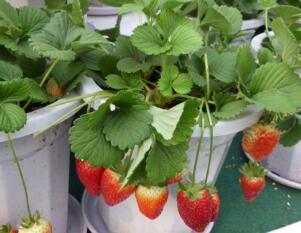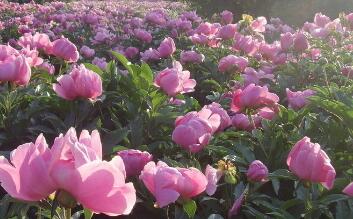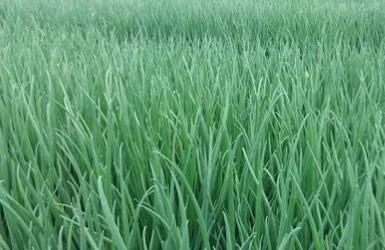Planting methods of potted strawberries: master the following planting skills: there are too many strawberries to eat.
Strawberry has high nutritional value, contains a variety of nutrients, and has health care effect. Many people like to go to the park to pick strawberries, but they are worried about pesticides. It is better to plant a few pots at home, healthy, delicious and safe! However, potted strawberries are not so easy to grow. Master the following potted strawberry planting methods and skills, there are too many strawberries to eat.

When do strawberries usually be planted?
Strawberries are generally planted in spring, autumn, or even the four seasons, because they are perennial plants. Strawberry is a warm and cool plant, the most suitable season for strawberry growth is generally around September, the temperature is very suitable. Strawberry has high economic benefits, early ripening time, small plants, wide adaptability and easy reproduction, so it is loved by many farmers, but strawberry varieties try to choose local suitable ones.
2. potted planting methods of strawberries
Choose pots and soil: it is appropriate for potted plants to choose ceramic pots with a diameter of 20-30 cm. The basin soil is selected with high humus content.
Cultivation techniques: potted plants can be planted all the year round. But from the garden seedlings on the pot, it is best to carry out in autumn. Choose strong seedlings, take more soil when you start the seedlings, remove the old residual leaves, and cut the roots of the seedlings to about 10 cm. Let the roots stretch and plant in the potted soil. The depth of planting is based on the principle of not showing roots and not paying attention to it. The soil should be solid, fixed seedling position, so that the soil surface and basin mouth to maintain a distance of 3-4 cm. Water thoroughly after planting, leave it in the shade for 3-5 days, then move to a place with plenty of light.
Fertilizer and water management: strawberries of the four seasons blossom and bear fruit many times a year and consume a lot of nutrients, so it is necessary to strengthen nutrient replenishment. Can be used animal hoofs, fish bones, poultry viscera, bean cake, etc., add water to mature fermentation, retting into liquid fertilizer or topdressing compound fertilizer. Usually top dressing once a week. Outdoor potted plants, watered once every morning and evening. When watering, you should warm the water in advance and reuse it, and do not use well water or tap water directly.
Seedling management: plant management of potted strawberries should be strengthened. First, timely thinning buds, picking leaves, removing stolons. The high-level flowers that are about to be ineffective should be properly thinned in the bud dispersion period. Old leaves, residual leaves, diseased leaves and excess stolons were removed to reduce nutrient consumption and improve fruit quality. The second is fruit shaping. That is, the fruit racks of different shapes are made with iron wire or bamboo sticks and put into flowerpots to make the ears ventilated and transparent, the fruit coloring evenly, prevent the soil from polluting the fruit and reduce the harm of diseases and insect pests. At the same time, stolons can also be used for artistic modeling to improve the ornamental value. Third, corresponding comprehensive control measures should be adopted for the prevention and control of diseases and insect pests.
Change the basin: the strawberry produces a new stem every year, the base of the new stem has a new root, and the lower part of the old root gradually dies. As strawberry stems and roots move up every year, in order to ensure a suitable environment for rooting at the base of the new stem, the soil must be cultivated at the base of the new stem and a layer of soil must be added in the basin. If there are conditions, change the basin before and after the beginning of autumn, add new nutrient soil to the new pot, pour the plant with soil and put it in the new pot, plant a little deeper. If the plant has borne fruit for two years, changing the pot can shake off the soil around the plant, expose the root system, carefully break off a section of rhizome in the lower part of the new root, and then plant it into a new basin slightly larger than the original basin to play the role of renewal and rejuvenation.
Temperature and humidity: general potted strawberries require a temperature of 20-25 ℃ and room temperature above 15 ℃ in winter. The flowerpot should be placed in a ventilated and sunny place, and the pot soil should always be kept moist.
Overwintering and breeding. Potted strawberries placed outdoors can be moved into a sunny place indoors in winter, or on a closed balcony facing south. Plastic film is also used to keep warm in the cold winter. It can also be trenched on the ground and discharged into the basin, which is sealed with soil around the basin and covered slightly above.
Matters needing attention in potted strawberries
Strawberries are suitable for growing in sunny, hydrophobic soil. The soil is about 8-10 inches deep.
For large strawberries, the row spacing should be 12 inches and the plant spacing should be about 18 inches. The vines of the plant should be removed in time to facilitate the fruit of strawberries. The yield of strawberries is periodic, so it is best to cultivate some new plants in the first few years of planting.
If you don't like managing strawberries, you can plant strawberries every 18-24 inches so that strawberries can grow everywhere. Of course, it will look a little messy, and the strawberries are not big. If you want to avoid this situation, you can remove some vines properly.
In winter, you can spread hay 3-4 inches thick on the plant before waiting for the soil to freeze. In the spring of the following year, when new leaves grow, the hay is removed.
Time: 2019-03-14 Click:
- Prev

How to raise peony flowers? Introduction of planting methods and matters needing attention of potted Paeonia lactiflora
Paeonia lactiflora, also known as Jiuli, Licao, Yu Rong, Hongyao and so on, is a perennial herbaceous animal of Paeoniaceae, which is known as flower immortal and flower phase, and is listed as one of the top ten famous flowers, also known as Puyue Flower God. Paeonia lactiflora has strong adaptability and cold tolerance.
- Next

How to grow chives at home? What is the specific planting method?
Spring onions are a common ingredient in our daily cooking, whether it's stew or noodles, sprinkled with a little chopped onions makes it more delicious. Now, small chives are not only planted in the ground, balcony planting is also more common. that
Related
- Fuxing push coffee new agricultural production and marketing class: lack of small-scale processing plants
- Jujube rice field leisure farm deep ploughing Yilan for five years to create a space for organic food and play
- Nongyu Farm-A trial of organic papaya for brave women with advanced technology
- Four points for attention in the prevention and control of diseases and insect pests of edible fungi
- How to add nutrient solution to Edible Fungi
- Is there any good way to control edible fungus mites?
- Open Inoculation Technology of Edible Fungi
- Is there any clever way to use fertilizer for edible fungus in winter?
- What agents are used to kill the pathogens of edible fungi in the mushroom shed?
- Rapid drying of Edible Fungi

